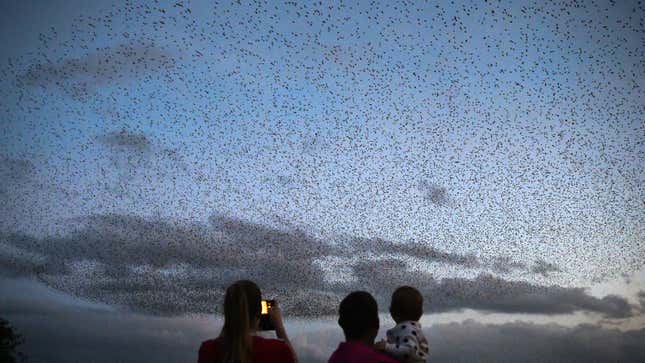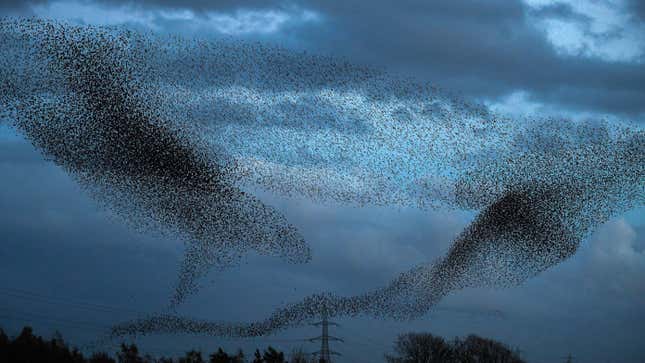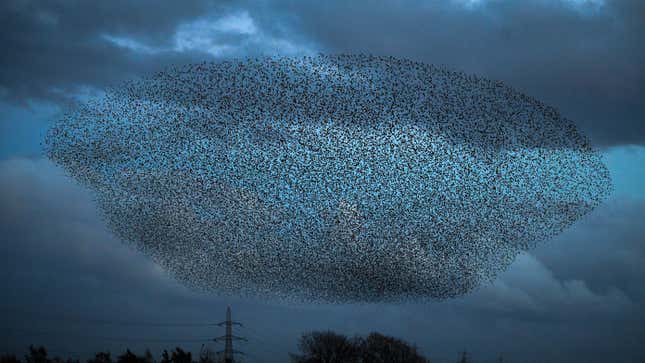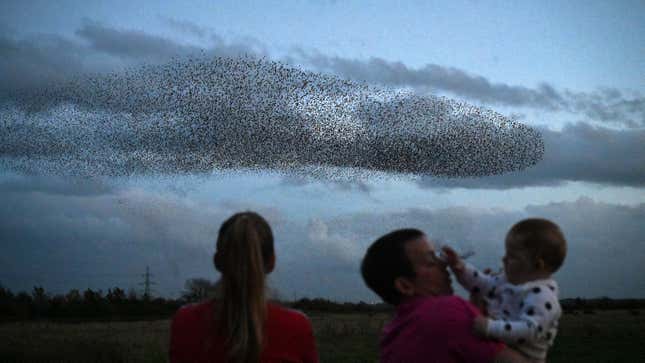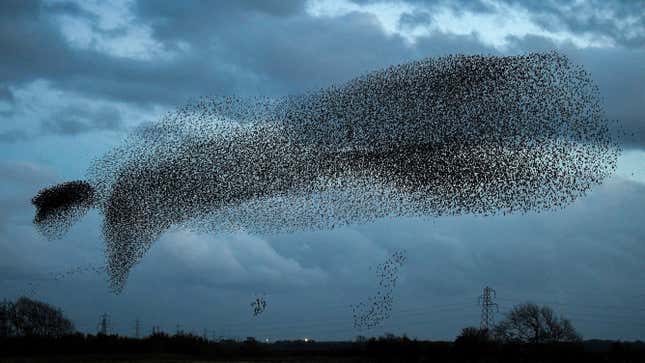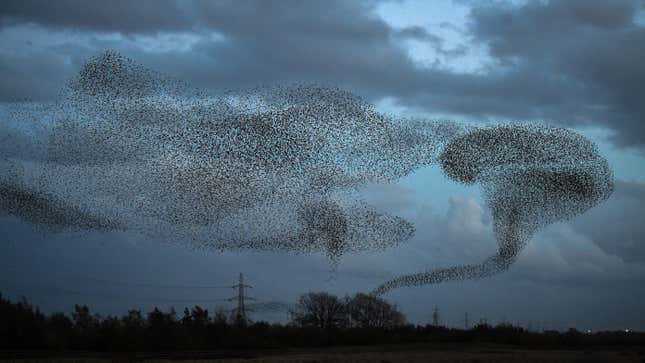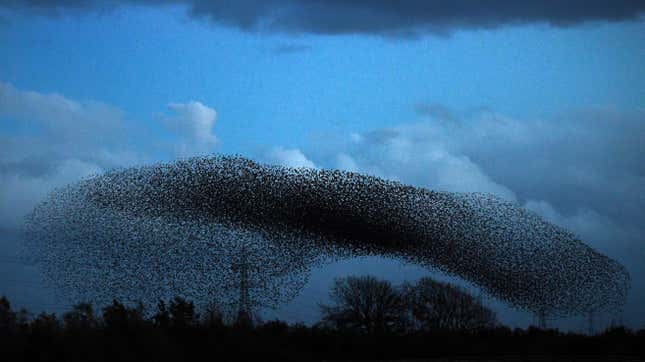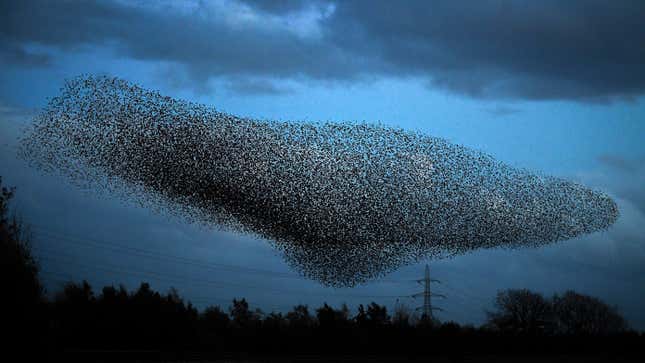
Although your first instinct when you see these photos might be, “Oh god,” we promise that it’s not an upcoming extreme weather event or some alien species coming to invade Earth. (Given that it’s 2020, you’re forgiven for thinking anything that’s not obviously good is probably horrific.) In fact, these are actually photos taken this week of a starling murmuration in Scotland.
